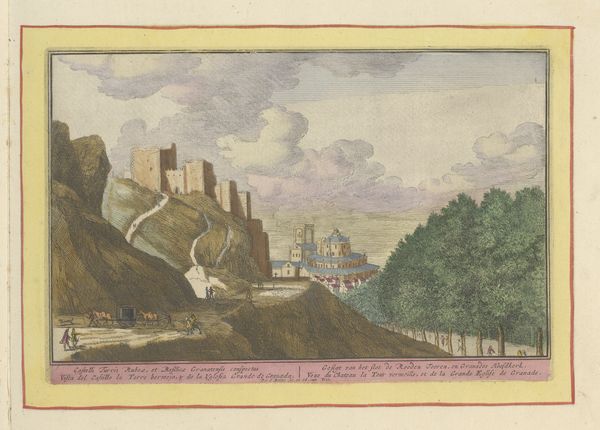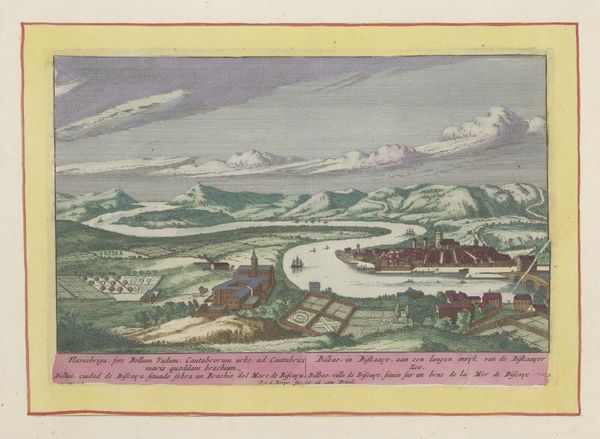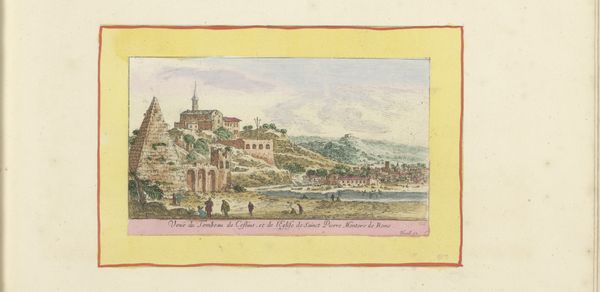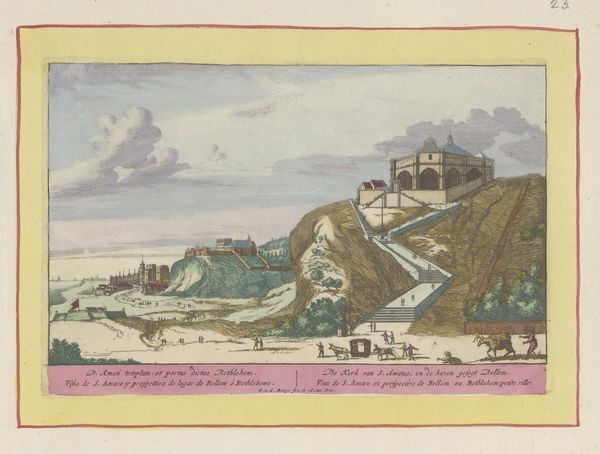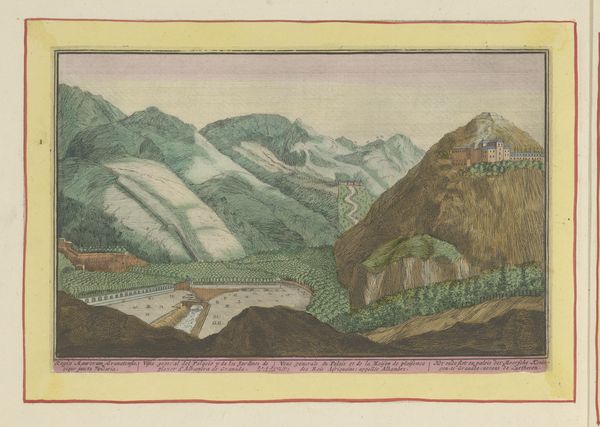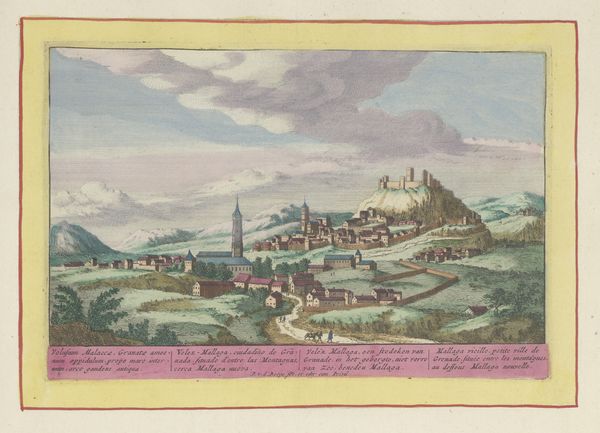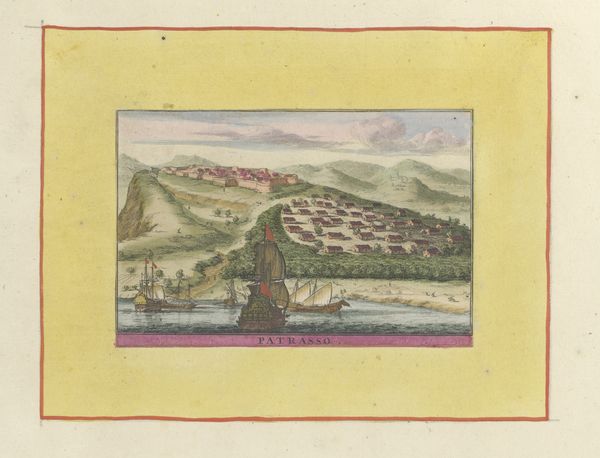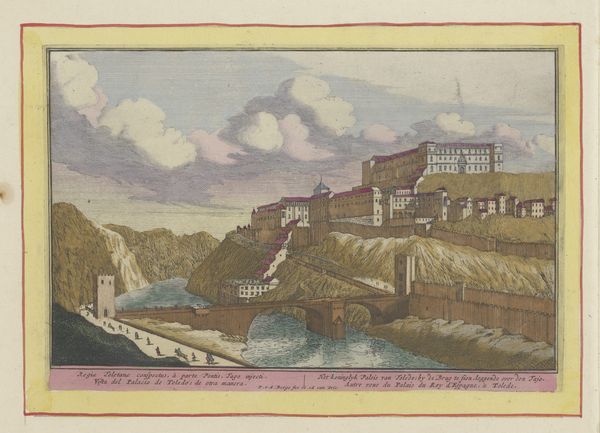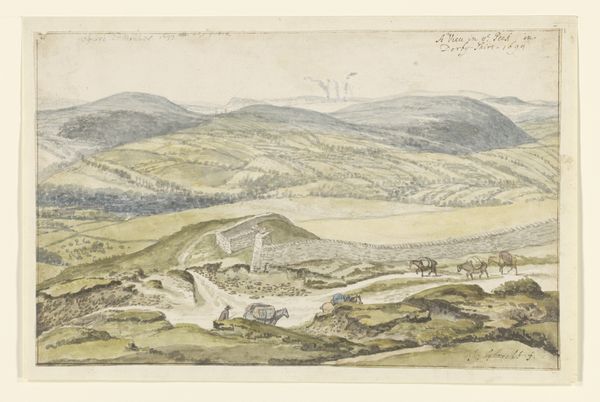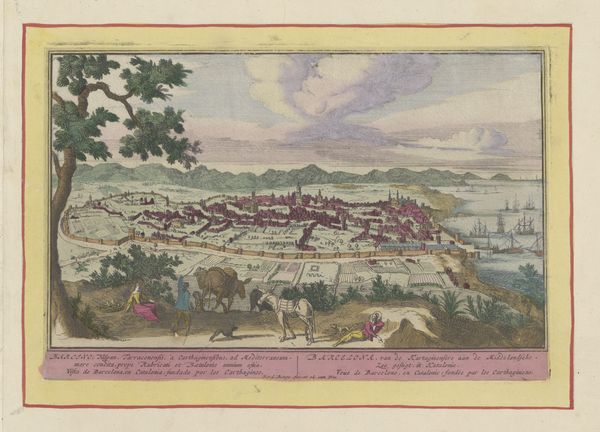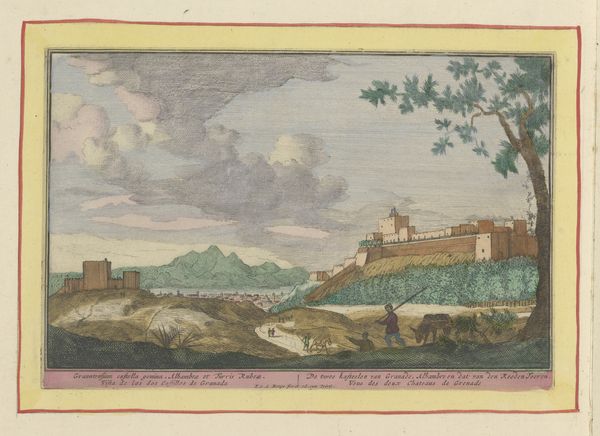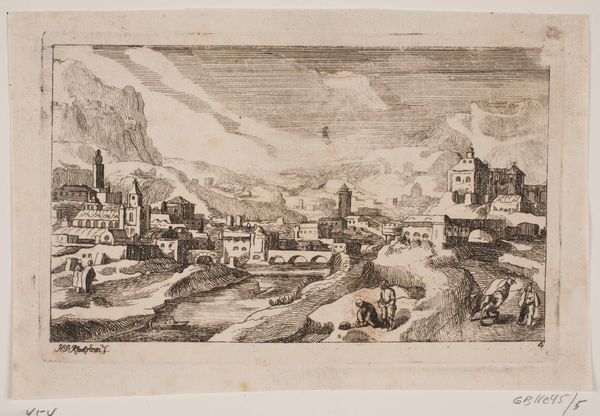
painting, print, watercolor, engraving
#
baroque
#
painting
# print
#
landscape
#
watercolor
#
coloured pencil
#
geometric
#
cityscape
#
engraving
#
watercolor
Dimensions: height 166 mm, width 255 mm
Copyright: Rijks Museum: Open Domain
Curator: Before us is "View of Granada and the Buildings of the Alhambra," a work attributed to Pieter van den Berge, dating sometime between 1694 and 1737. It is held in the Rijksmuseum collection. The artwork combines techniques of watercolor, engraving and possibly coloured pencil, producing a stunning landscape of the Andalusian city. Editor: My initial reaction is one of cool serenity. The pastel palette—pale blues and greens—creates a distant, almost dreamlike quality. It feels removed from the bustle of the city, even though we see it spread out below the Alhambra. Curator: Indeed, the cityscape element is secondary to the commanding presence of the Alhambra, positioned atop the hill like an enduring emblem. This positioning certainly wasn't accidental. We're viewing not merely a geographic location but a visual claim about power and cultural legacy. This view was composed, politically speaking. Editor: Precisely. Note how the geometric forms of the Alhambra—the squares and towers—are contrasted against the natural forms: the flowing lines of the mountains in the backdrop. Even the clouds feel sculpted. There is an implication of human will and architecture over the natural world, civilization over nature, Christianity over Islam. What appears to be picturesque is an act of symbolic cartography. Curator: The landscape as a projection of identity and power, precisely! Consider how popular these types of city views were during this period, specifically in the context of growing European colonial ambitions and mapping strategies. They reflect an impulse to visually catalogue and therefore intellectually "possess" the world. Editor: Absolutely. And notice that tree, placed asymmetrically on the right side. The tree can symbolize different concepts depending on who and when the work was done. But consider that it creates a threshold into this idealized space. Are we as viewers standing just outside the landscape, looking in and maybe preparing to move into it? Curator: That offers a powerful perspective, almost like the tree symbolizes that first step. Now, standing here today, viewing the print, it encourages us to reflect upon how that image influenced viewers, what feelings it sparked, and whose stories it deliberately amplified or obscured. Editor: Yes, and what persistent impressions and visual echoes it leaves us with centuries later. Thank you for illuminating it further.
Comments
No comments
Be the first to comment and join the conversation on the ultimate creative platform.
